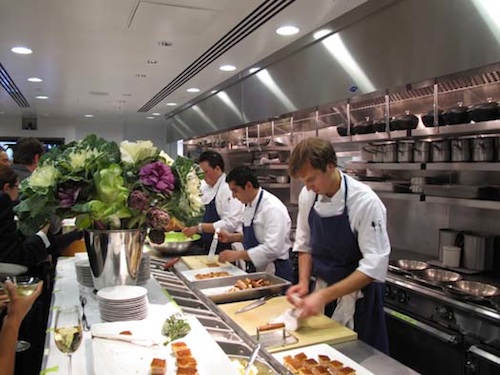From an article that’s been popular on Harvard Business Review for the past week (and yet, depressingly, I feel no one with an office job will actually follow the advice of):
If you’re working in the kitchen of Anthony Bourdain, legendary chef of Brasserie Les Halles, best-selling author, and famed television personality, you don’t dare so much as boil hot water without attending to a ritual that’s essential for any self-respecting chef: mise-en-place.
The “Meez,” as professionals call it, translates into “everything in its place.” In practice, it involves studying a recipe, thinking through the tools and equipment you will need, and assembling the ingredients in the right proportion before you begin. It is the planning phase of every meal—the moment when chefs evaluate the totality of what they are trying to achieve and create an action plan for the meal ahead.
For the experienced chef, mise-en-place represents more than a quaint practice or a time-saving technique. It’s a state of mind.
“Mise-en-place is the religion of all good line cooks,” Bourdain wrote in his runaway bestsellerKitchen Confidential. “As a cook, your station, and its condition, its state of readiness, is an extension of your nervous system… The universe is in order when your station is set…”
Yep. Agree, and I think that applies to home cooking too. (I try to do mise-en-place when I cook, and I’m good — but by no means a professional.)
What’s your day like?
Now think about how you approach the first stages of an office day. Small talk? Checking e-mail? Being sure to tell someone you’re leaving early? Reading or writing an employee newsletter? Hitting the phones? Whatever it is, it’s probably not right. Remember: while e-mail was a major step forward in business communications, it’s also inherently a distraction; when you check e-mail, it can take you as many as 23 minutes to get re-focused on what you were doing before the e-mail. Attention spans are basically shot anyway, and 23 minutes is close to 1/16th of your day. Can you really afford that?
Some idea of productivity styles
There are about a million and one “productivity in the early part of the day” studies and articles online, so I won’t bore you with all of ’em, but here’s a couple of bullet takeaways:
1. Make an actual list of what you hope to accomplish that day based on what would make you say “Today was a success!”
2. Use verbs when you make lists, so that you can know specifically what the end goal is.
3. Be as specific as possible.
4. Despite the idea of how busy you are or competing priorities — both of which will always exist — resist the urge to rush head-long into some task. Rather, focus. What are the priorities for this day and this day only? If you happen to manage others, encourage your team to do this as well. It’ll make you a better manager.
5. The idea isn’t to get cracking on tasks and meetings immediately — that’s actually a bad idea — but rather to set the agenda for what needs to be done and go from there. Context. You do that with your kids’ schedules or with planning a night out, right? So why do you sit down at a desk and start grinding away without any?
Look, if you’re going to be working in an office … you might as well be doing it right.
